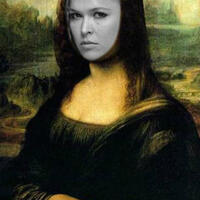More about The Nightmare
- All
- Info
- Shop

Contributor
Ever experience sleep paralysis? Henry Fuseli says relax! It’s probably just an incubus hanging out on your chest.
A sleeping damsel in distress with a suspicious hairy creature perched upon her and the kind of horse only white walkers would mount are standard ingredients for an iconic painting. Fuseli’s Nightmare from the Romantic era becomes one of the first ever images to explore the mysterious terrain of slumber and the subconscious. Later Surrealist artists like Salvador Dali and Man Ray reaped the fruits of Fuseli’s conceptual seeds and furthered the exploration of dreams.
This painting’s title could be a pun on the “night” “mare” in the background. You know, a female horse? Bad jokes aside, the word nightmare actually derives from “night” and “mara”. Mara was supposedly a spirit in Northern European mythology that was thought to suffocate and distress sleepers. So that inexplicable weighty feeling on the chest, sleep paralysis, etc…just your basic Mara visit. Scary!And that Mara is further personified by a squatting incubus - sexual predator alert! Makes me wanna reach for my pepper spray.
There could also be a personal love story hidden in this picture. Rumor has it that Fuseli himself proposed to a lady named Anna Landholdt whose daddy disapproved and had her hitched to some other guy. The painting may well be a depiction of Fuseli’s lust for his unrequited love, where the limp lady is Anna and the ominous green demon is Fuseli. The split must have given the guy low self-esteem, because he didn’t do himself any favors. In any case, sometimes a broken heart leads to great art.
The Nightmare was considered totally scandalous at that time because of the overt sexual motifs. Not only is the woman about to get sexed by that horrible gargoyle, even the horse is ominously rape-y! Just the steed peeping through red folds of the curtain that hi, look like a vagina, would be enough to make an old lady beg for her smelling salts.
What a great bedtime story for girls. Sweet dreams, ladies!
Featured Content
Here is what Wikipedia says about The Nightmare
The Nightmare is a 1781 oil painting by the Swiss artist Henry Fuseli. It shows a woman in deep sleep with her arms thrown below her and a demonic and ape-like incubus crouched on her chest. The painting's erotic and haunting evocation of obsession became a breakthrough success for Fusel. The canvas portrays the woman's nightmare in which she is visited by an incubus and a horse's head. Contemporary critics were taken aback by the overt sexuality of the painting, since interpreted by some scholars as anticipating Jungian ideas about the unconscious.
After its debut at the 1782 Royal Academy of London, critics reacted with horrified fascination. The painting became widely popular to the extent that it was parodied in political satire, and engraved versions were widely distributed. In response, Fuseli produced at least three other versions.
Today the painting is housed at the Detroit Institute of Arts.
Check out the full Wikipedia article about The Nightmare

















